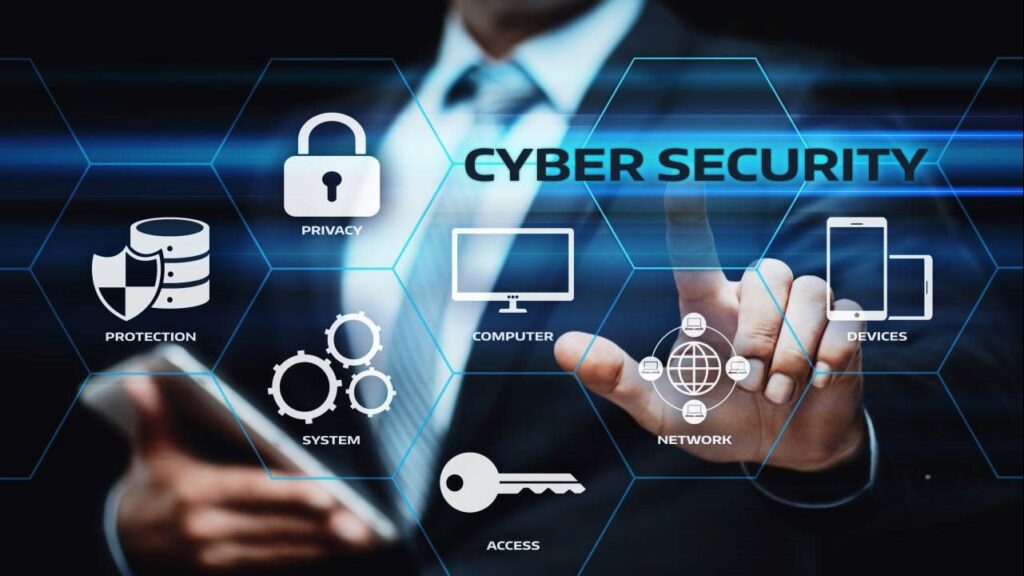Cybersecurity Future Trends: Protecting Digital Innovation in 2025

As cybersecurity future trends indicate, the cybersecurity landscape is rapidly evolving as we navigate through 2025. With digital transformation accelerating across industries, protecting our digital assets has become more crucial than ever. The convergence of emerging technologies like 5G networks and IoT devices has created new security challenges and opportunities.
Key Cybersecurity Trends Reshaping Digital Protection
AI-Powered Cybersecurity Systems
Artificial Intelligence has revolutionized cybersecurity defense mechanisms. Modern security systems leverage AI for:
- Real-time threat detection
- Automated incident response
- Behavioral analysis
- Predictive security measures
- Pattern recognition in attack vectors
The integration of AI with traditional security measures has improved response times by 60% and reduced false positives by 40% compared to conventional systems.
Quantum Computing Security
As quantum computing advances, cybersecurity must evolve to address new challenges:
- Quantum-resistant encryption
- Post-quantum cryptography
- Quantum key distribution
- Hybrid security solutions
Organizations are investing heavily in quantum-safe security measures to protect against future threats.
Zero-Trust Architecture Implementation
The zero-trust security model has become the gold standard for enterprise security:
- Continuous authentication
- Micro-segmentation
- Least privilege access
- Identity-based security
- Real-time monitoring
Cloud-Native Security Evolution
Cloud security continues to adapt to new challenges:
- Container security
- Serverless security
- Multi-cloud protection
- DevSecOps integration
- Cloud access security brokers (CASB)
Emerging Cybersecurity Technologies
Extended Detection and Response (XDR)
XDR platforms provide:
- Unified security incident detection
- Automated response capabilities
- Cross-platform integration
- Advanced analytics
- Threat hunting capabilities
Blockchain Security Applications
Blockchain technology is revolutionizing security through:
- Decentralized identity management
- Secure supply chain tracking
- Immutable audit trails
- Smart contract security
- Cryptocurrency protection
Internet of Things (IoT) Security
As discussed in our article about future technology trends, IoT security is becoming increasingly important:
- Edge computing security
- Device authentication
- Network segmentation
- Firmware security
- IoT security standards
Industry-Specific Security Trends
Healthcare Cybersecurity
The healthcare sector faces unique challenges:
- Medical device security
- Patient data protection
- Telehealth security
- HIPAA compliance
- Remote healthcare security
Financial Services Security
Banking and financial institutions are implementing:
- Open banking security
- Digital payment protection
- Fraud detection systems
- Regulatory compliance
- Customer data protection
Manufacturing Security
Industry 4.0 brings new security requirements:
- OT/IT convergence security
- Smart factory protection
- Supply chain security
- Industrial IoT security
- Digital twin protection
Regulatory and Compliance Trends
Data Privacy Regulations
New privacy regulations are shaping security requirements:
- GDPR evolution
- CCPA compliance
- State-specific regulations
- International data transfer rules
- Privacy-enhancing technologies
Security Framework Updates
Industry frameworks are evolving:
- NIST framework updates
- ISO standard changes
- Industry-specific guidelines
- International standards
- Compliance automation
Future Security Challenges
Advanced Persistent Threats (APTs)
Organizations must prepare for:
- State-sponsored attacks
- Sophisticated malware
- Social engineering
- Supply chain attacks
- Zero-day exploits
Ransomware Evolution
Ransomware continues to evolve with:
- Double extortion tactics
- Ransomware-as-a-Service
- Critical infrastructure targeting
- Cloud service attacks
- AI-powered variants
Security Skills and Workforce Trends
Cybersecurity Education
The industry focuses on:
- Continuous learning
- Certification programs
- Hands-on training
- Virtual labs
- Mentorship programs
Security Automation and Orchestration
Organizations are implementing:
- Security automation platforms
- Workflow orchestration
- Incident response automation
- Compliance automation
- Security task automation
Recommendations for Organizations
Strategic Planning
Organizations should:
- Assess current security posture
- Develop long-term security strategy
- Allocate adequate resources
- Build security awareness
- Implement continuous improvement
Investment Priorities
Focus investments on:
- Advanced security technologies
- Workforce development
- Infrastructure upgrades
- Security automation
- Compliance programs
The future of cybersecurity is dynamic and complex. Organizations must stay ahead of emerging threats while adapting to new technologies and regulations. Success in this evolving landscape requires a combination of advanced technology adoption, skilled workforce development, and strategic planning.
By understanding and preparing for these cybersecurity future trends, organizations can better protect their digital assets and maintain competitive advantages in an increasingly connected world.




